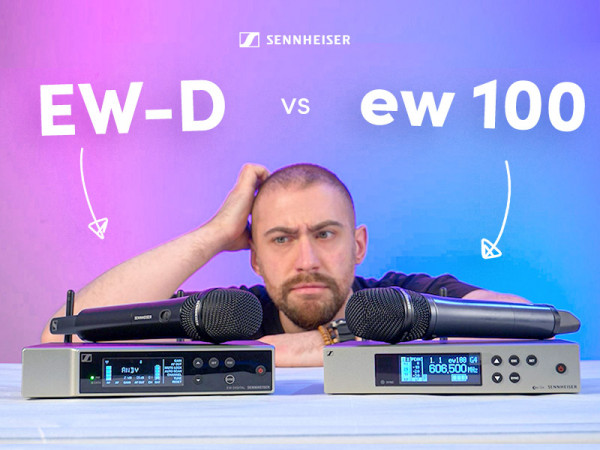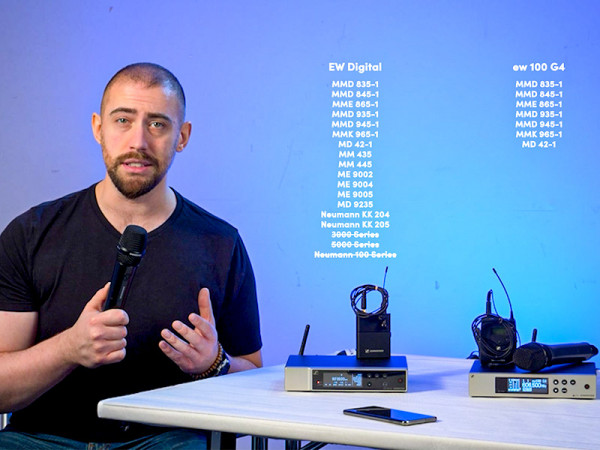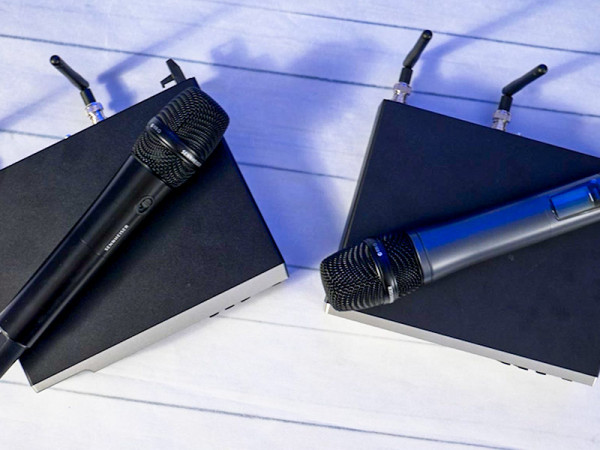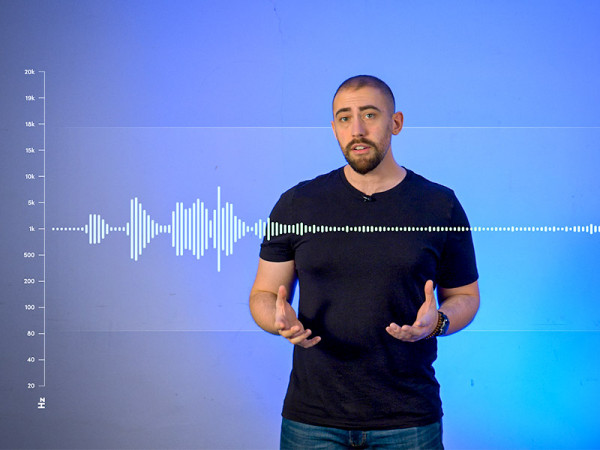Sennheiser ew 100 vs EW-D: What’s New?
Posted on: 17th December 2021
Whether you’re already familiar with Sennheiser’s flagship wireless mic series or shopping the difference between ew 100 and EW-D, we’ve got you covered.
Both systems are affordable and flexible all-rounders, similarly positioned for performance and speech on stage and in the studio. Unlike the more premium placed 300 and 500 series, ew 100 and EW-D sit around the same price point and share some common features and settings. But with an extra 2 and a half years in development, EW-D brings some serious improvements to the table that might just sway you away from the 100 series.
Sound Performance
With G4, Sennheiser evolved the performance of the G3 series across the board. But, when it comes to sound performance, EWD levelled up yet again with a massive 134Db’s of dynamic range. What does this mean? Well, with G4 100 and many other systems, a compandor is used to cut distortion from high and low frequencies to preserve clarity. This is great for avoiding unwanted noise at the high and low ends, but can result in some distortion and remove some detail along the way.
EW-D on the other hand, uses a digital codec to cleanly process audio, providing a wider dynamic range than any other wireless system on the market. Watch our video at the top of this article for a live demo illustrating this. Be sure to have a decent pair of headphones so you can hear the difference. Our stress test, while extreme, does clearly demonstrate how well the new EW-D codec deals with challenging audio sources.
Channels, Frequencies, Monitoring
Dynamic range isn’t the only thing that’s been supercharged. Sennheiser’s also increased EW-D’s bandwidth to 56MHz, allowing a 600 khz equidistant spacing between channels, eliminating inter modulation issues. This increase also means EW-D can support over 4x as many channels as ew 100, scaling up to 90 channels total. The equidistant spacing between channels happens automatically during a frequency scan, further simplifying set up for all users.
Speaking of simplifying things, did we mention the Smart Assist App? Introduced with EWD, the Smart Assist App for iOS and Android lets you remotely monitor, control and synchronise up to 16 systems all via Bluetooth. On ew 100, you can hard wire up to 12 systems for fast frequency allocation. However, monitoring and adjustments are limited to local control. If you want to know more about the EW-D App, you can watch our video on the Top 5 Smart Assist features here:
On EW-D, if you’d rather deal with your systems locally you can still set everything up from the front panel. Like ew 100 you can adjust output, channel and frequency allocation and more; but now with a simplified interface, all your options are easily accessible from the top menu for a much smoother user experience.
Sets, Transmitters and Capsules
Syncing transmitters with EW-D is also super simple, with the infra-red sync from ew 100 replaced with a Bluetooth connection. This gives you a lot more flexibility when chopping and changing transmitters because you don’t even need to be in the same room as the receiver. Just use the smart assist app to initiate the sync, hit the sync button on your transmitter and if you’re in range they’ll pair instantly. In our testing, we managed to sync a handheld transmitter from the other side of the office through walls and glass from up to 25 metres before we gave up.
Since we’re talking about transmitters, this is another area where EWD shines. Both wireless mic systems come with a wide range of mic options, and while ew 100 is available directly with a lot more capsules, the new EW-D handheld is compatible with any Sennheiser or Neumann capsule, except for the 3000 and 5000 series and Neumann KK 100 series. It even works with the brand new 400 series performance capsules.
Finally, if all day performance is a dealbreaker for you, both systems offer amazing battery life at 8 hours from 2 AA batteries. Although, with EW-D at least, we managed to get almost 9 hours continuous use out of the handheld. However, EW-D has one final trick up its sleeve, with a brand-new rechargeable battery pack [BA70] which will get you up to 12 hours of battery life from a single charge, easily covering almost any situation.
Choosing the right wireless mic system for your projects can be difficult so we hope you found this post helpful in making your decision. For more information on EW-D and ew 100 G4, visit our product pages below, or call our team on 01525 850085.





